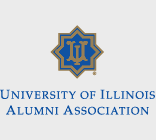CONTENT
- HOME PAGE
- PROLOGUE AN URBAN LEGACY
- INTRODUCING THE WEST SIDE
- 19th-CENTURY CAMERA
- URBAN PHOTOGRAPHERS HINE AND KIRKLAND
- PICTORIAL CHICAGO
- CHICAGO ENLIGHTENED CITY BEAUTIFUL
- CHICAGO GROTESQUE LAWLESS STREETS
- HULL-HOUSE "OASIS" IN A SLUM
- IMMIGRANT EMIGRANT CITY
- "ALIEN" COLONIES
- "RACE" COLONIES
- GHETTO LIVING
- "CHEAP" ECONOMY
- FAMILY
- AMUSEMENTS
- PUBLIC HEALTH
- TENEMENTS
- URBAN SOCIOLOGY CHICAGO SCHOOL
- MAXWELL STREET ARCHITECTURE TOUR
- CHICAGO CITY MAPS
THE AMERICAN JOURNAL OF SOCIOLOGY
Long before the Farm Security Administration in the 1930s brought photography to prominence, The American Journal of Sociology between 1896 and 1916, edited and published in Chicago, used 244 photographs in 31 articles–the first academic journal in the U.S. to embrace photographs.
Many of the images featured the visual context of living conditions on Chicago’s West Side. In 1897, Moore on Hull-House pictured the social welfare center as an orderly, healthy, neat place where residents did not crowd each other and the poverty from the street disappeared. In 1898 Zeublen on West Side Municipal playgrounds used the “before and after” technique following the introduction of playground equipment and adult supervision at local playlots .
In 1897, Moore on the Saloon introduced a documentary and ethnographic approach that countered the evangelical curse of the saloon as a den of iniquity. Moore pictured a softer and positive vision-the saloon as a social center which included images of a female bartender and relaxing patrons.
The visual message that alcohol and male drinkers were not singularly at the core of major domestic problems–wife-beating, hungry children, unemployment, fighting–highlighted a more appealing perspective on this popular street institution–the working man’s club.
In 1901 Charles Bushnell published his three part dissertation study on the work processes and work environment at the Chicago Stockyards. He promoted the ethnographic use of photographs as an authoritative form of evidence not communicated by the conventional text, tables, and charts preferred by “experts.” Unequal gender relationships on the factory floor were now visually witnessed, as well as social costs to the neighborhood when children scavenged at the garbage dump and black soot polluted the air.
By means of enriching the text with the photographs, Bushnell censured management for its exploitation and neglect of the needs of workers. He took it for granted that the photographs communicated an intimate and immediate sense of the work, the social, and neighborhood environments which narratives, descriptions, and tables did not adequately convey.
Bushnell’s innovative use of photography introduced what Lewis Hine first called “social photography” then “photo-story”–where images and text complement each other by contributing to a cognitive understanding of a subject in contrast to a sensational. (Hine was a graduate student in residence at the University of Chicago when Bushnell published his dissertation on the stockyards in the AJS.)
Less innovative in the use of photography but significant nevertheless, were the multiple housing articles on Chicago’s West Side published by social workers affiliated with the University of Chicago and Hull-House. The images these authors included were framed in the Jacob Riis style with families or lodgers cramped into small, dark, windowless cubicles and rooms.
The scenes across different groups remained the same. However a diversity of ethnic features did appear within the variety of dress and room furnishings displayed. Social workers repeatedly displayed these images less for cognitive value and scientific evidence than commitment by Christian reformers to moral action soliciting funds to build model housing and “save the children.”
Prominent sociologists, such as Robert Park at the University of Chicago, strove to establish a modern discipline based on scientific method–not social work practices based on remedial action. For the half century after 1916, the profession of sociology and the foundational The American Journal of Sociology abandoned the use of photographs in their presentations as soft, unreliable and invalid sources for the scientific enterprise.
One contribution of The American Journal of Sociology before 1916 was to establish a field called “visual sociology.” Within the limits of competence in early camera technology, “visual sociology” integrated images with text, reduced human distortions in the presence of the camera, and framed the activities of whole persons in their work contexts–persons and work situations that for historical and ethnographic studies remain both identifiable and instructive today. bjb



